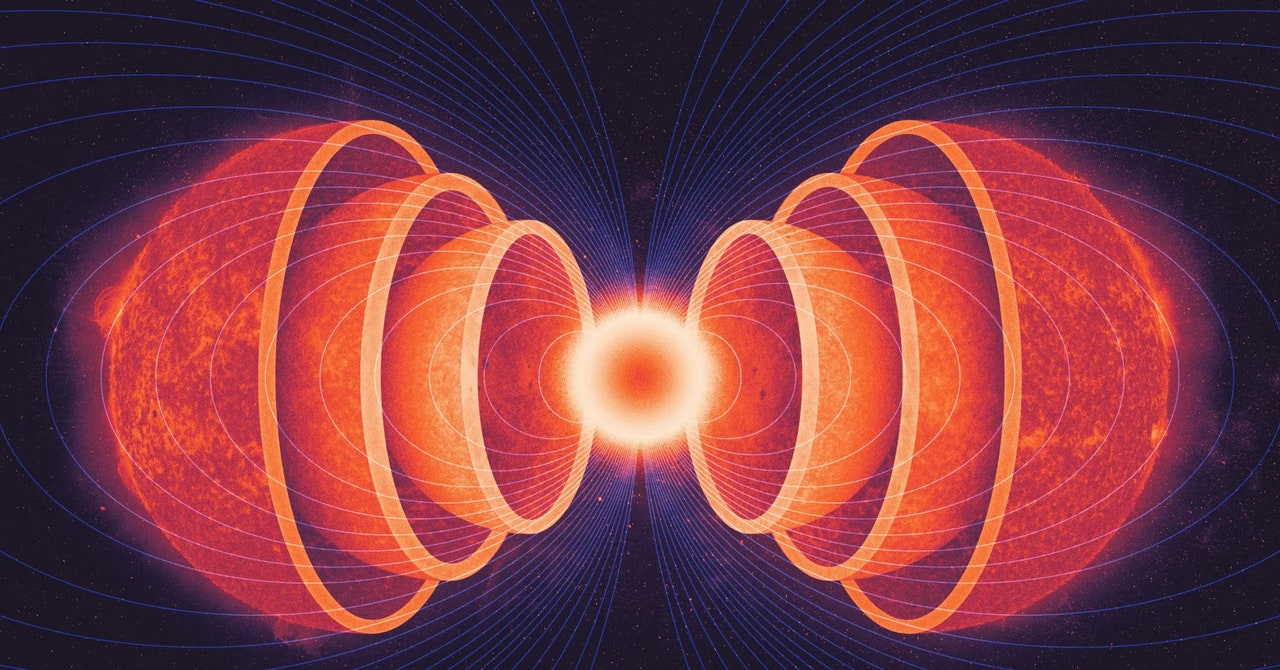
That was a surprise—and a possible indication that something crucial was missing in those models: magnetism.
Stellar Symmetry
Last year, Gang Li, an asteroseismologist now at KU Leuven, went digging through Kepler’s giants. He was searching for a mixed-mode signal that recorded the magnetic field in the core of a red giant. “Astonishingly, I actually found a few instances of this phenomenon,” he said.
Typically, mixed-mode oscillations in red giants occur almost rhythmically, producing a symmetric signal. Bugnet and others had predicted that magnetic fields would break that symmetry, but no one was able to make that tricky observation—until Li’s team.
Li and his colleagues found a giant trio that exhibited the predicted asymmetries, and they calculated that each star’s magnetic field was up to “2,000 times the strength of a typical fridge magnet”—strong, but consistent with predictions.
However, one of the three red giants surprised them: Its mixed-mode signal was backward. “We were a bit puzzled,” said Sébastien Deheuvels, a study author and an astrophysicist at Toulouse. Deheuvels thinks this result suggests that the star’s magnetic field is tipped on its side, meaning that the technique could determine the orientation of magnetic fields, which is crucial for updating models of stellar evolution.
A second study, led by Deheuvels, used mixed-mode asteroseismology to detect magnetic fields in the cores of 11 red giants. Here, the team explored how those fields affected the properties of g-modes—which, Deheuvels noted, may provide a way to move beyond red giants and detect magnetic fields in stars that don’t show those rare asymmetries. But first “we want to find the number of red giants that show this behavior and compare them to different scenarios for the formation of these magnetic fields,” Deheuvels said.
Not Just a Number
Using starquakes to investigate the interiors of stars kicked off a “renaissance” in stellar evolution, said Conny Aerts, an astrophysicist at KU Leuven.
The renaissance has far-reaching implications for our understanding of stars and of our place in the cosmos. So far, we know the exact age of just one star—our sun—which scientists determined based on the chemical composition of meteorites that formed during the birth of the solar system. For every other star in the universe, we only have estimated ages based on rotation and mass. Add internal magnetism, and you have a way to estimate stellar ages with more precision.

